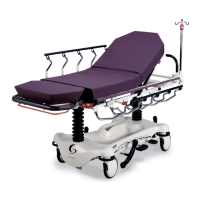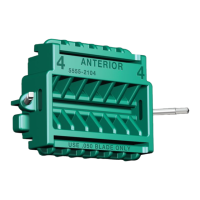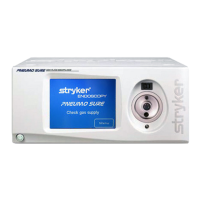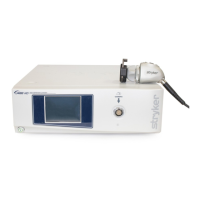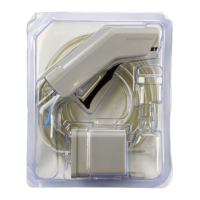94
S
16. Servicing the Visum 600/450
e various functions of the lights can be operated with the help of a wall control, which communi-
cates with the controls via a CAN bus.
ese functions are explained with user-friendly symbols on the wall control. An external power box
is the power supply for all the electronic circuits. A lighting system always consists of two independent
lights. One light is set up for a camera system to allow for live recording sessions during surgery.
16.1 Electronic Control System
e electronic control system is designed to control the brightness of halogen lights in medical OR
lights. e principle is based on a phase-angle control of the input voltage to eectively control the
output voltage for the light.
is function includes:
• Brightness control of the halogen light
• Identication of a defective light, including mechanical switch to a back-up light
• Communication with peripheral devices via CAN bus
• Optional input and output
• Integration of an RS-232 interface
• Connection setup for an electronic camera
• Temperature measurement of the cooling element
e direct voltage (abbreviated DC) is chopped by the electronic circuits. e pulse/no pulse ratio
of the resulting PWM signal varies according to the supply voltage and the brightness level settings.
Smoothing and stabilizing processes produce the eective light voltage that is supplied to the light.
Using the gure on the following page as a reference, ensure the supply voltage for the low current
branch is routed over an input lter circuit (1). is lter circuit complies with the EMC and oers
polarity reversal protection and peak limiting. is is followed by several supply voltages (4).
e high current branch, which is designed to supply the lights, has been tted with a separate polarity
reversal protection (2).
e input voltage is recorded by two independent measuring circuits (3). e micro-controller (7)
calculates the necessary pulse/no pulse ratio to activate the light driver (11 or 13). e supply voltage
is forwarded in full strength to the light (L1 or L2). When the previously calculated time window has
reached the eectively set voltage of the light, the driver (11 or 13) opens the ground connection so
that no more current can continue to ow. Aer a dened frequency ratio, (PWM pulse/no pulse) the
driver is closed and the current can ow again.
To maintain a decoupling between high current branch and MC, galvanized isolation is implemented
by means of the optocouplers (10 and 12). Two independent light branches (L1, 11, 10 as well as L2,
13, 12) have been provided for the event that one of the lights becomes defective. A motor is activated
to change the light (5 + 22) when the electronic circuits recognize by way of the probe (3) that a light
is defective and the second light is automatically swiveled into the center of the mirror. is back-up
light starts to generate light and a “defective light“ message is sent to the wall control.
e control assembly contains an optional digital output drive and a digital input (6) for possible ad-
ditional functions.
